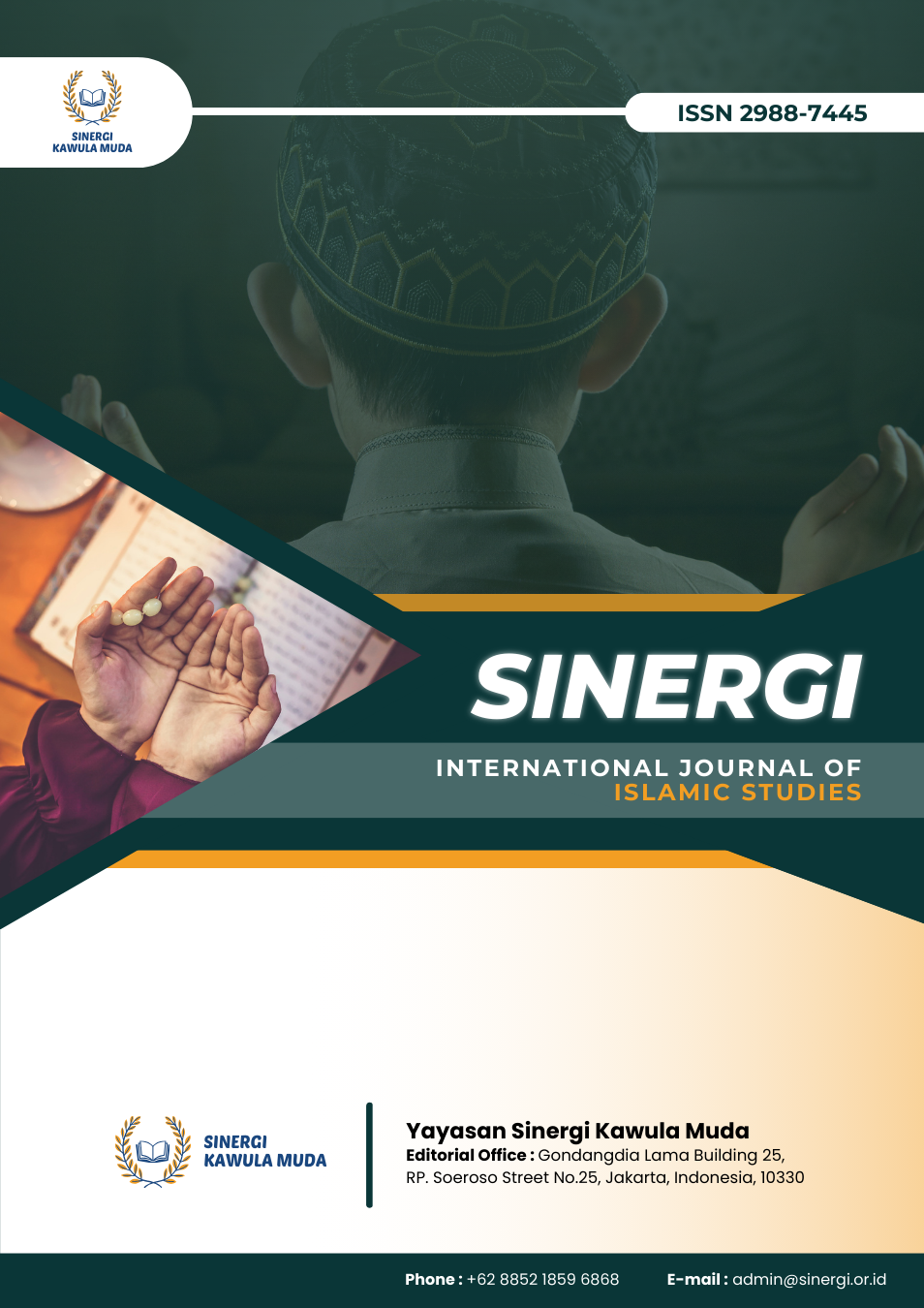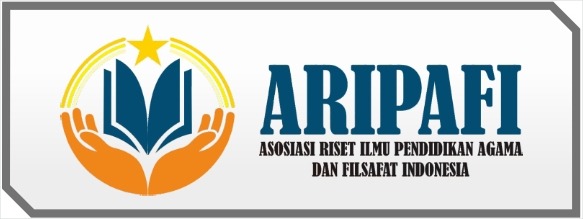Integrating Halalan Thayyiban Principles in Herbal and Cosmetic Regulation: A Model for Religious and Scientific Convergence
DOI:
https://doi.org/10.61194/ijis.v3i3.896Keywords:
Halal Cosmetics, Halalan Thayyiban, GMP, Halal Certification, ISO 22716, SIHALAL, Product SafetyAbstract
The convergence between religious compliance and scientific safety protocols has become increasingly important in developing halal-certified cosmetics. This study investigates the integration of Halalan Thayyiban principles rooted in Islamic law and modern regulatory standards within Indonesia’s herbal and cosmetic industries. The objective is to develop a regulatory-scientific model that aligns the requirements of halal certification (HAS 23000, UU 33/2014) with quality assurance protocols (ISO 22716, PerBPOM 16/2024). Using a normative-qualitative approach, the study analyzes regulatory documents, certification procedures, and safety test standards. Key elements of the halal certification process are examined, including the SIHALAL platform, halal-critical ingredient mapping, and the documentation framework. Parallel to this, thayyib criteria are addressed through microbiological and chemical safety evaluations, product stability assessments, and patch testing protocols aligned with international benchmarks. Findings reveal strong compatibility between halal and thayyib systems, enabling the development of an integrated compliance model. The proposed framework incorporates regulatory checkpoints, supplier documentation, GMP alignment, and technological innovations such as RFID and blockchain for traceability. The study also identifies institutional roles, implementation challenges particularly among SMEs and strategic support mechanisms to enhance certification readiness. The integrated Halalan Thayyiban framework offers a dual benefit: it ensures syariah compliance while upholding modern safety standards, thus improving consumer trust and market positioning. These findings contribute to the discourse on regulatory harmonization and provide practical guidance for producers, auditors, and policymakers.
References
Abdullah, N., Nor Azaruddin Husni Haji Nuruddin, & Abdullah, L. C. (2020). Determinants of the Halal Cosmetics Adoption Among Young Consumers in the Klang Valley. Tafhim Ikim Journal of Islam and the Contemporary World, 13(2), 55–83. https://doi.org/10.56389/tafhim.vol13no2.3 DOI: https://doi.org/10.56389/tafhim.vol13no2.3
Abidin, N. Z., & Perdana, F. F. P. (2020). A Proposed Conceptual Framework for Blockchain Technology in Halal Food Product Verification. Journal of Halal Industry & Services, 3. https://doi.org/10.36877/jhis.a0000079 DOI: https://doi.org/10.36877/jhis.a0000079
Adham, K. A., Masood, A., Muhamad, N. S., & Senik, Z. C. (2023). Halal Industry in Uzbekistan: Analysis Using the Viable System Model. Kybernetes, 53(10), 3549–3567. https://doi.org/10.1108/k-11-2022-1598 DOI: https://doi.org/10.1108/K-11-2022-1598
Aidid, M. A. (2024). The Transformation of Interest Prohibition. Mazahibuna, 113–127. https://doi.org/10.24252/mazahibuna.vi.44469 DOI: https://doi.org/10.24252/mazahibuna.vi.44469
Aisyi, G. R., Putri, D. A., & Dadah, D. (2024). Analisis Zakat Profesi Dalam Zakat Mal Berdasarkan Kajian Hadis. Elnubuwwah, 2(2), 235–263. https://doi.org/10.19105/elnubuwwah.v2i2.14581 DOI: https://doi.org/10.19105/elnubuwwah.v2i2.14581
Alamsyah, A., Hakim, N., & Hendayani, R. (2022). Blockchain-Based Traceability System to Support the Indonesian Halal Supply Chain Ecosystem. Economies, 10(6), 134. https://doi.org/10.3390/economies10060134 DOI: https://doi.org/10.3390/economies10060134
Anatasha, S., & Malahayatie, M. (2024). Jaminan Industri Halal Di Negara Singapura Dan Taiwan. Al-Dzahab, 5(2), 86–94. https://doi.org/10.32939/dhb.v5i2.3908 DOI: https://doi.org/10.32939/dhb.v5i2.3908
Annabi, C. A., & Ibidapo-Obe, O. O. (2017). Halal Certification Organizations in the United Kingdom. Journal of Islamic Marketing, 8(1), 107–126. https://doi.org/10.1108/jima-06-2015-0045 DOI: https://doi.org/10.1108/JIMA-06-2015-0045
Azam, M. S. E., & Abdullah, M. A. (2020). Global Halal Industry: Realities and Opportunities. International Journal of Islamic Business Ethics, 5(1), 47. https://doi.org/10.30659/ijibe.5.1.47-59 DOI: https://doi.org/10.30659/ijibe.5.1.47-59
Azmi, N. A. N., Noor, N. A. M., & Elgharbawy, A. A. (2021). Bibliometric Analysis on Halal Cosmetics Over Twenty Years. Halalsphere, 1(1), 53–71. https://doi.org/10.31436/hs.v1i1.9 DOI: https://doi.org/10.31436/hs.v1i1.9
Daud, M. Z., Zarmani, N. F., & Tumiran, M. A. (2021). Analysis of Halal Assurance Management on Imported Food Products in Malaysia. Ijhemp, 1(1), 08–19. https://doi.org/10.35631//ijhemp.11002 DOI: https://doi.org/10.35631//IJHEMP.11002
Elizabeth, I. R., Suyatma, N. E., Yuliana, N. D., Ranasasmita, R., & Syaifullah, S. J. (2021). Integration of ISO 22000 (2018) and HAS 23000 Through Management System Audit: Case Study in Corned Beef Producer. Indonesian Journal of Halal Research, 3(2), 43–55. https://doi.org/10.15575/ijhar.v3i2.13515 DOI: https://doi.org/10.15575/ijhar.v3i2.13515
Eris, F. R., Najah, Z., Rusbana, T. B., Wulandari, P., Annadzifah, N., & Riyanto, R. A. (2023). Halal Critical Point of Beneng Taro Products Identification Produced by Micro Enterprise in Serang City, Banten. Food Scientech Journal, 5(1), 93. https://doi.org/10.33512/fsj.v5i1.20914 DOI: https://doi.org/10.33512/fsj.v5i1.20914
Fajri, M. (2020). Integrated Food Assurance System. Iop Conference Series Earth and Environmental Science, 443(1), 012095. https://doi.org/10.1088/1755-1315/443/1/012095 DOI: https://doi.org/10.1088/1755-1315/443/1/012095
Farooqi, M. A., Rizvi, A., & Ramzan, M. (2022). The Classical and Contemporary Approaches Towards International Law: Conceptual and Thematic Study of Siyar (Islamic International Law). International Journal of Social Science & Entrepreneurship, 2(2), 494–505. https://doi.org/10.58661/ijsse.v2i2.85 DOI: https://doi.org/10.58661/ijsse.v2i2.85
Fibrianti, N., Niravita, A., Rahayu, S. A. P., Damayanti, R., & Ningsih, A. S. (2023). Halal Certification Systems: A Comparison Between Indonesia and Turkey. Pandecta Research Law Journal, 18(2), 424–456. https://doi.org/10.15294/pandecta.v18i2.48095 DOI: https://doi.org/10.15294/pandecta.v18i2.48095
Handriana, T., Yulianti, P., Kurniawati, M., Arina, N. A., Aisyah, R. A., Aryani, M. G. A., & Wandira, R. K. (2020). Purchase Behavior of Millennial Female Generation on Halal Cosmetic Products. Journal of Islamic Marketing, 12(7), 1295–1315. https://doi.org/10.1108/jima-11-2019-0235 DOI: https://doi.org/10.1108/JIMA-11-2019-0235
Hasan, M. R., & Latif, M. S. A. (2024). Towards a Holistic Halal Certification Self-Declare System: An Analysis of Maqasid Al-Sharīʿah-Based Approaches in Indonesia and Malaysia. Mazahib, 23(1), 41–78. https://doi.org/10.21093/mj.v23i1.6529 DOI: https://doi.org/10.21093/mj.v23i1.6529
Hidayati, L., Sucipto, S., Cheumar, M. T., & Juliana, J. (2024). Integrating Halal Assurance and Quality Management: A Strategic Framework for Sustainable Growth in the Food Industry. Industria Jurnal Teknologi Dan Manajemen Agroindustri, 13(2), 239–254. https://doi.org/10.21776/ub.industria.2024.013.02.8 DOI: https://doi.org/10.21776/ub.industria.2024.013.02.8
Hilme, S. I., & Raffi, R. M. (2024). Maqasid Approach and Shariah Rules Towards Halal Industry. Jhasib, 2(2), 1–14. https://doi.org/10.31098/jhasib.v2i2.2691 DOI: https://doi.org/10.31098/jhasib.v2i2.2691
Huda, M., Shofia, N., Solehudin, E., Rozikin, O., & Ahyani, H. (2024). Development of Progressive Islamic Law in Indonesia Regarding �Apostasy� as Grounds for Divorce: Insights From Maqasid Sharia. Ulul Albab Jurnal Studi Dan Penelitian Hukum Islam, 6(1), 73. https://doi.org/10.30659/jua.v6i1.36754 DOI: https://doi.org/10.30659/jua.v6i1.36754
Isa, R. M., Man, S., Rahman, N. N. A., & Aziz, A. (2023). Determinants of Consumer Adoption of Halal Cosmetics: A systematic Literature Review. Journal of Cosmetic Dermatology, 22(3), 752–762. https://doi.org/10.1111/jocd.15486 DOI: https://doi.org/10.1111/jocd.15486
Ismail, A. A., & Nabila, N. (2024). Analysis of the Concept of Ta’zir in Law Enforcement Against Perpetrators of Sexual Harassment. Syariat, 1(3), 148–155. https://doi.org/10.35335/khmyvr58 DOI: https://doi.org/10.35335/khmyvr58
Jalili, I., Syaifuddin, H., Ulfa, F., Gusmansyah, W., & Zaim, M. A. (2024). The Legitimacy of Abortion: A Socio-Legal Analysis of Islamic Jurisprudence and Indonesian Law. De Jure Jurnal Hukum Dan Syar Iah, 16(2), 382–405. https://doi.org/10.18860/j-fsh.v16i2.29077 DOI: https://doi.org/10.18860/j-fsh.v16i2.29077
Judijanto, L., Sudarmanto, E., Harsono, I., Afandy, C., & Lucky, M. (2024). Identification of Research Trends in Islamic Financial Product Innovation. West Science Interdisciplinary Studies, 2(02), 467–474. https://doi.org/10.58812/wsis.v2i02.680 DOI: https://doi.org/10.58812/wsis.v2i02.680
Khairuddin, K. (2023). Protection and Status of Children Born Outside of Marriage. Tasyri Journal of Islamic Law, 4(2), 781–808. https://doi.org/10.53038/tsyr.v4i2.320 DOI: https://doi.org/10.53038/tsyr.v4i2.320
Khan, M. T., Khan, T. I., & Ahmed, Mr. S. (2020). Halal Products: Not Restricted to Food and Its Marketing Opportunity in the Muslim World. Research Journal of Social Sciences & Economics Review (Rjsser), 1(4), 101–112. https://doi.org/10.36902/rjsser-vol1-iss4-2020(101-112) DOI: https://doi.org/10.36902/rjsser-vol1-iss4-2020(101-112)
Khanfani, M., Diniyah, A., & Putri, G. Z. A. (2023). Exploring the Influence of Consumer Behavior on Purchase Decision and Purchase Intention for Halal Cosmetics: The Moderating Role of Halal Awareness. Airlangga International Journal of Islamic Economics and Finance, 6(02), 144–160. https://doi.org/10.20473/aijief.v6i02.50743 DOI: https://doi.org/10.20473/aijief.v6i02.50743
Lathifah, A., & Narulidea, W. (2017). Business Model Financially Viable for a Radio Frequency Identification (Rfid) Application to Halal Food System. Jurnal Ekonomi Dan Bisnis Islam (Journal of Islamic Economics and Business), 3(1), 12. https://doi.org/10.20473/jebis.v3i1.3169 DOI: https://doi.org/10.20473/jebis.v3i1.3169
Liew, C. W. S., & Karia, N. (2024). Halal Cosmetics: A Technology-Empowered Systematic Literature Review. Journal of Islamic Marketing, 15(7), 1722–1742. https://doi.org/10.1108/jima-09-2023-0295 DOI: https://doi.org/10.1108/JIMA-09-2023-0295
Malini, H., Arulanandam, B. V., & Maghribi, R. (2022). The Reality on the Ground – Placing Indonesian Halal Cosmetics Onto the International Pedestal. Asian Journal of Islamic Management (Ajim), 67–82. https://doi.org/10.20885/ajim.vol3.iss2.art1 DOI: https://doi.org/10.20885/AJIM.vol3.iss2.art1
Maysyaroh, S., & Rusydiana, A. S. (2023). Twitter Sentiment Analysis on Halal Cosmetics. Imr, 2(1). https://doi.org/10.58968/imr.v2i1.232 DOI: https://doi.org/10.58968/imr.v2i1.232
Mirajiani, & Susihono, W. (2021). The Evaluation of Has-23000 Implementation in Sate Bandeng Industry Certified of Halal. https://doi.org/10.2991/absr.k.210304.017 DOI: https://doi.org/10.2991/absr.k.210304.017
Mohamed, Y. H., Rahim, A., & Ma’aram, A. (2020). The Effect of Halal Supply Chain Management on Halal Integrity Assurance for the Food Industry in Malaysia. Journal of Islamic Marketing, 12(9), 1734–1750. https://doi.org/10.1108/jima-12-2018-0240 DOI: https://doi.org/10.1108/JIMA-12-2018-0240
Mohezar, S., Zailani, S., & Zainuddin, Z. (2016). Halal Cosmetics Adoption Among Young Muslim Consumers in Malaysia: Religiosity Concern. Global Journal Al-Thaqafah, 6(1), 47–59. https://doi.org/10.7187/gjat10220160601 DOI: https://doi.org/10.7187/GJAT10220160601
Mustapha, M. R., Ahamad, F., Hazahari, N. Y., & Samsudin, N. (2024). Ethical Issues in the Halal Food Supply Chain: A Systematic Bibliometric Review. Journal of Islamic Marketing, 15(12), 3804–3819. https://doi.org/10.1108/jima-07-2023-0210 DOI: https://doi.org/10.1108/JIMA-07-2023-0210
Nugroho, K., Fiddarain, Z., Hilmie, M., & Hidayatulloh, M. K. (2024). Conceptual Analysis of Food Safety Based on Ethical and Legal Perspectives in the Qur’an and Hadith. Taqaddumi Journal of Quran and Hadith Studies, 4(2), 135–147. https://doi.org/10.12928/taqaddumi.v4i2.12484 DOI: https://doi.org/10.12928/taqaddumi.v4i2.12484
Othman, Y., Ali, M. N. A., & Shah, H. A. R. (2022). Halal Built-in Approach to Regulation of Halal Cosmetic Products. International Journal of Academic Research in Business and Social Sciences, 12(12). https://doi.org/10.6007/ijarbss/v12-i12/16067 DOI: https://doi.org/10.6007/IJARBSS/v12-i12/16067
Putro, D. H., Nurwahidin, N., Hannase, M., Nafis, M. C., Fatwa, N., & Muttaqin, M. I. (2024). Contextualization of Ushul Fiqh in Muamalah and Modern Banking: Sharia Solutions in the Global Economic System. International Journal of Integrative Sciences, 3(11), 1243–1254. https://doi.org/10.55927/ijis.v3i11.12424 DOI: https://doi.org/10.55927/ijis.v3i11.12424
Rahman, S. A., & Rahman, U. H. A. (2024). A Systematic Literature Review on Success Factors, Issues and Challenges in Halal Assurance Management System (HAS) Implementation in the Production of Halal Products. Current Trends in Biotechnology and Pharmacy, 18(3s), 50–70. https://doi.org/10.5530/ctbp.2024.3s.4 DOI: https://doi.org/10.5530/ctbp.2024.3s.4
Randeree, K. (2019). Challenges in Halal Food Ecosystems: The Case of the United Arab Emirates. British Food Journal, 121(5), 1154–1167. https://doi.org/10.1108/bfj-08-2018-0515 DOI: https://doi.org/10.1108/BFJ-08-2018-0515
Sari, M., & Rahayu, S. S. (2024). Sentiment Analysis on Halal Traceability: Dimensions-Based Literature Index. Hs, 2(1). https://doi.org/10.58968/hs.v2i1.496 DOI: https://doi.org/10.58968/hs.v2i1.496
Shahid, S., Parray, M. A., Thomas, G., Farooqi, R., & Islam, J. U. (2022). Determinants of Muslim Consumers’ Halal Cosmetics Repurchase Intention: An Emerging Market’s Perspective. Journal of Islamic Marketing, 14(3), 826–850. https://doi.org/10.1108/jima-08-2021-0265 DOI: https://doi.org/10.1108/JIMA-08-2021-0265
Sugibayashi, K., Yusuf, E., Todo, H., Dahlizar, S., Sakdiset, P., Arce, F., & See, G. L. (2019). Halal Cosmetics: A Review on Ingredients, Production, and Testing Methods. Cosmetics, 6(3), 37. https://doi.org/10.3390/cosmetics6030037 DOI: https://doi.org/10.3390/cosmetics6030037
Sumarta, S., Burhanudin, B., & Zamzami, Z. (2024). Interpretasi Dan Pengembangan Hukum Islam Dalam Konteks Perkembangan Zaman. Khulasah Islamic Studies Journal, 6(2), 48–61. https://doi.org/10.55656/kisj.v6i2.124 DOI: https://doi.org/10.55656/kisj.v6i2.124
Suryani, W., Subri, I. M., Rafiki, A., Tobing, F., & Hidayat, S. E. (2022). Overview of Halal Cosmetics in a Decade: A Bibliometric Analysis. Al-Iqtishad Journal of Islamic Economics, 14(1). https://doi.org/10.15408/aiq.v14i1.23361 DOI: https://doi.org/10.15408/aiq.v14i1.23361
Tan, K. H., Ali, M. H., Makhbul, Z. K. M., & Ismail, A. (2017). The Impact of External Integration on Halal Food Integrity. Supply Chain Management an International Journal, 22(2), 186–199. https://doi.org/10.1108/scm-05-2016-0171 DOI: https://doi.org/10.1108/SCM-05-2016-0171
Tukiran, N. A., & Anuar, N. A. A. (2022). Halal Cosmetics: A Review on Halalan Toyyiban Concept in Soap Production. Halalsphere, 2(2), 86–93. https://doi.org/10.31436/hs.v2i2.57 DOI: https://doi.org/10.31436/hs.v2i2.57
Yaacob, T. Z., Majid, M., Hashim, H. I. C., & Hasan, M. Z. (2024). A Systematic Review of Traceability and Monitoring in Port Transportation Processes for Halal Compliance and Certification. Journal of Accounting Business and Management (Jabm), 32(1), 116. https://doi.org/10.31966/jabminternational.v32i1.1458 DOI: https://doi.org/10.31966/jabminternational.v32i1.1458
Yanthy, E., Purwanto, A., Pramono, R., Cahyono, Y., & Asbari, M. (2020). Pengaruh Gaya Kepemimpinan Transformasional Dan Tranksaksional Terhadap Kinerja Sistem Jaminan Halal HAS 23000. Bisnis Jurnal Bisnis Dan Manajemen Islam, 8(1). https://doi.org/10.21043/bisnis.v8i1.7045 DOI: https://doi.org/10.21043/bisnis.v8i1.7045






